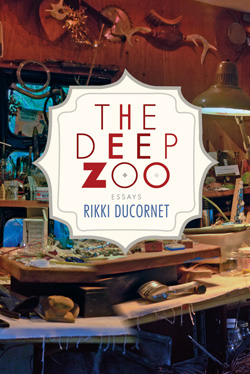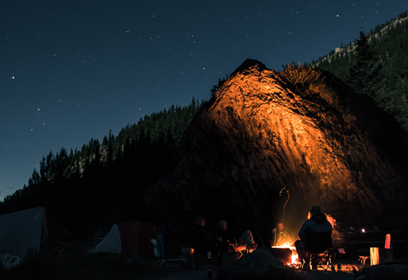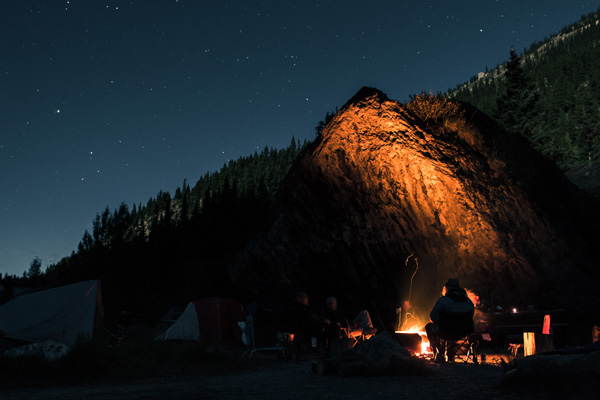Over the course of eight novels, four short story collections, seven books of poetry, and two collections of essays, Rikki Ducornet has created a biological literature. Language gathers in her work with the joyful superabundance of the natural world; her rich vocabularies seethe and writhe with a corporeal life of their own, dreaming and breathing and creating heat.
 Given the closeness, here, between language and a kind of biogenesis, it is clear that, for Ducornet, literature is a form of science, a way “to propose a reading of the world and to reveal its potencies.” By potencies, she means what Gaston Bachelard termed the “mysteries of matter”—its natural powers, or what she calls, in the title of her latest book, The Deep Zoo.
Given the closeness, here, between language and a kind of biogenesis, it is clear that, for Ducornet, literature is a form of science, a way “to propose a reading of the world and to reveal its potencies.” By potencies, she means what Gaston Bachelard termed the “mysteries of matter”—its natural powers, or what she calls, in the title of her latest book, The Deep Zoo.
Like the bulk of Ducornet’s work, The Deep Zoo is a twisty, many-forked thing. Though barely over a hundred pages long, the essays it includes are broad and gnarled enough to enfold their fair share of contradiction. On their surface, the essays cover such topics as Borges and Cortazar, Abu Ghraib, the Marquis de Sade, William Gass’s Omensetter’s Luck (1966), and the films of David Lynch. But as the material coalesces and separates, one glimpses something like sympathies echoing between them. Ducornet’s sometimes-aphoristic phrases have a ring of truth, even as they unwind in slippery, mysterious fashion: “If Beauty is dangerous, its danger quickens in the house from which it has been banished.” This is, as Ducornet points out, the language of the forest and not of the street: as in the forest, things that come suddenly to light are returned just as quickly to the shadows. And as these flickering truths accumulate, one begins to suspect that the book is a kind of love letter to the shadows themselves, and a call for their protection.
The struggle is between, on the one hand, the human urge to control and limit and, on the other, a mutable, unsteady creative impulse, which mirrors that of the natural world and is born of unity with it. This is often a theme in Ducornet’s novels as well: for instance, in Entering Fire (1987), the frustrated Septimus is set against his naturalist father Lamprias, repression and fear of an eros-inflected natural world boiling over into fascism and murder.
The Deep Zoo’s slippery quality is a demonstration of Ducornet’s claim that the embrace of instability, unknowingness, and so on is crucial to the separation of fertile, creative darkness from darkness tout court. Where the latter insists on definition, on being just one thing, Ducornet’s darkness is instead the possibility—the organic potential—of all things at once. The book makes an oblique case for the necessity of this kind of creative danger, the risks of which are closely tied to those of the natural world: from the black night sky to the sometimes-deadly nature of freedom, to the wildness, even monstrousness, of living things. A splendid encomium in “A Memoir in the Form of a Manifesto,” a central essay, is worth quoting at length for its unusual straightforwardness:
We are told that flat, like fear, is good for us, somehow suitable; fear and boredom fit us better . . . . But I will have none of it. And I decry the rise of plastic and the decline of fur; the confusion of capitalism and democracy; the tyranny of religion and the dereliction of moral vision; the lethally misguided notion that like suitable ideas, the creative impulse must know and keep its place; that art and literature, like trousers and radishes, are no more than commodities.
A world worth wanting cherishes the risks of wildness, and this includes not only the lavish elephants and meteoric crabs, but the stars we can no longer see; the whales hemorrhaging on our beaches; the serene mollusks and coral reaches; Gilgamesh as filmed by the Brothers Quay; the eroticized Martians imagined by Clarice Lispector; the Amazon’s poison frogs; the Sahara’s thick-coming locusts; the vociferous parrots; William Gass’s Omensetter; the worms in their legions and the yellow boas; Rosamond Purcells’s and van Leeuwenhoek’s third eyes and Borges’s Aleph; the oracle at Delphi and Gaudí’s dream of an unbounded architecture; the necessary nightmares of David Lynch . . . and, need I say it: subversive storytelling in which the world is reinvented, reinvigorated, and restored to us in all its sprawling splendor, over and over again.
The message is ecological as much as artistic and draws on an understanding of the creative imagination that reunites the writer’s art with the things of the natural world through playfulness, dreams, and reverie. Erotic, evolving, and subversive, the imagination is nonetheless “sublimely rational” in the same way biological processes are: nothing in its flamboyance is wasted. The written word, like a living thing with the potential to develop into anything else (and like Whitman’s “I,” for that matter), contains multitudes—it is productive. It allows us access to the unknown as much as to the known, offering risk as much as sanctuary, otherness as much as likeness. Instead of separating us from nature, it confirms us as part of it, restoring nature to us. This natural affinity for the surprising, the wonderful, the mysterious, even the threatening, is what makes the human wise as well as moral. “I am thinking of those instances over which we have no control,” Ducornet writes, “that surpass our wildest imagining: here aesthetic intuition lies in ambush—fertile and dynamic, invigorated by delight.”
Ducornet’s darkness is the organic potential of all things at once.
Yet this kind of moral, artistic playfulness is, like the natural world it responds to, critically endangered. Where human beings are not allowed—out of fear, misplaced propriety, repression, or ignorance—to toy with the mysteries of the world and discover their sympathies with it, they become imaginatively impoverished and therefore more easily turned toward reductive measures of control. “To lethal effect,” Ducornet writes, the human eye “faults and punishes the world for its mutabilities, its sprawl of forms, the ephemerality of experience, the enigmatic nature of creatures each day more incomprehensible in their gathering solitude.”
John Berger addresses a similar sense of humankind’s self-imposed isolation in his essay “Why Look at Animals?” included in 1980’s About Looking. Berger powerfully examines the marginalization of the animal, whose “lack of common language, its silence, guarantees its distance, its distinctness, its exclusion, from and of man.” Yet, in this silent presence, the animal once offered companionship to the “loneliness of man as a species.” As Berger shows, the animal had, at one time, a magical function: it was both like and unlike a human and so confronted the human imagination with questions and answers about itself. The transformation of the animal from mysterious, mystical companion to managed vassal, fully “known,” which Berger identifies as having begun in the nineteenth century, broke apart what was essentially a metaphorical relationship, where commonalities revealed differences and vice versa. In zoos, as pets, reproduced as children’s toys, animals have lost their autonomy and their otherness. They are deprived of their dark potencies—what made them threatening as well as surprising and instructive—so our imagination and knowledge are deprived as well. The existence of a deep zoo, despite those things “zoo” implies, depends on wildness, a certain unknowability out of which metaphoric likeness might emerge.
When this sort of impoverishment occurs—that is, when human beings isolate themselves from that which is outside their control—the imagination suffers in ways that may have concrete political, social, and moral consequences. In the essay “Silling,” Ducornet examines the setting of Sade’s 120 Days of Sodom, an example of the kind of world that emerges in the absence of imaginative interaction with difference. Ducornet suggests that 120 Days, for all its horrific excesses, demands not disgust but thoughtfulness: she sees it as a cry of rage and an act of violence against self and world—comparable to that, she offers, of a suicide bomber—that is unexpectedly moral at base.
Silling castle is run by “bloodsuckers” and “traffickers” who, despite their sexual outrages, despise erotic pleasure, chance, bodily instability, and the kind of generous, quicksilver imagination at the heart of what it means to be good. “Better every time to fuck a man than seek to comprehend him,” Sade writes. In this Ducornet hears an augury of contemporary politics, where the answer to rage and thoughtlessness is more rage and thoughtlessness, where Republican candidates outdo one another in their enthusiasm for the death penalty or their willingness to bomb any given country into oblivion. One might also see in Silling portents of mass extinction, the reduction of the world to a walled fortress inside of which everything is under stern human control. Sade’s “messieurs” would even control the weather through their furious, passionless coupling, Mother Nature being among those they’d rather fuck than understand.
To Ducornet, then, Silling is the image of that “general darkness,” which admits nothing but the dull heaviness of irrational frivolity. It demands to be answered with rigorous self-questioning, with the productive refusal of a world in which the other, animal or human, is silenced, flattened, deprived of meaning. Sade’s rage burns with the kind of creative self-endangerment that Ducornet sees as necessary to this refusal.
Existence is a high-wire act, between the moral oblivion evoked in the fictional Silling (and its real-world manifestation in places such as Abu Ghraib) and the preciousness of a creative freedom out of which anything, even the metaphorical immolation of 120 Days, could emerge. While it is common to claim that art is a “safe space” to enact this dance, Ducornet’s point is that safety is analgesic at best—in or out of art. Her answer to moral darkness is not an increase of artificial light, but rather the kind of playfulness, the “lightness of thoughtfulness,” as Italo Calvino put it, at work every day in the processes of the natural, physical world. Some of these processes are, like Sade’s, acts of productive destruction—wildfires whose fury returns and replenishes the forest. Beauty is banished in acts such as these, but, being mutable, returns.
Light and shadow are twins; darkness is a place to dream; the dream creates the world. If art provides illumination, it also celebrates enigma: Ducornet’s is a literature where the serpent offers not only knowledge but salutary disobedience, where terror and wonder, the marvelous and the monstrous, are two sides of the same coin. It is through this lightness, this reverie, that she reunites the human imagination with the unpredictable, prolific wilderness that made it, and so returns the wilderness to us.








